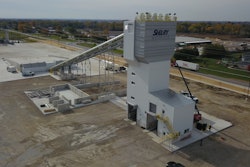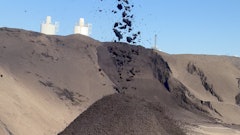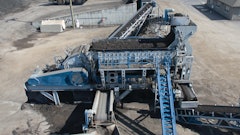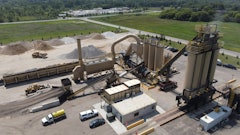
For an asphalt producer, the tedious process of erecting scaffolding inside an asphalt storage silo to manually inspect for damage can interrupt production for three days to complete the dangerous task of checking for holes and other wear-related problems.
Chuck Simpson, lead product development engineer for Astec, has been on a four-year quest to develop a safe and efficient way to inspect the inside of an asphalt storage silo. The determination and hard work Simpson and other Astec associates put into that effort has come to fruition with final field testing completed this summer.
The Silobot features magnetic wheels that allow it to travel vertically up and down the interior wall of a storage silo to record a video inspection, as well as an ultrasound measurement of wall thickness, was an idea the late Don Brock wanted to pursue to safely provide an inspection service to plant owners.
“Inspecting the inside of asphalt silos has always presented safety concerns for technicians who had to take a day to set up scaffolding, a day to manually conduct the inspection, and a day to take down the scaffolding,” explains Simpson. "It’s a harsh, hot environment with asphalt buildup and oil covering the surface a technician is trying to evaluate. So, we really had to start from scratch in designing and manufacturing a hands-free robotic device that could perform in that type of environment. There was no off-the-shelf product we could use to build what we needed.”
But after several years of testing and modifying the device that was needed, Simpson and his associates were confident they had a proven technology ready to demonstrate at CONEXPO 2017.
“We took a prototype to that show, demonstrated and gathered input from plant operators for further enhancements,” Simpson notes. “With some modifications, we were ready to take our Silobot out into the field and actually test it on inspections to make sure it delivered everything customers wanted. With a high definition (video) camera and the ultrasound capability to measure wall thickness, we’re able to quickly inspect and assess the condition of a silo’s interior without ever having to place the operator inside that dangerous environment.”
As Simpson points out, asphalt is a very abrasive material that can cause a lot of wear and tear to silo’s spool sections, seam welds and ceramic liner of the loadout cone.
Using goggles that control the Silobot’s position and camera direction simply by the operator moving his head in the direction he wants to inspect, a complete inspection of one silo can be completed in a matter of hours, not days, saving plant owners thousands of dollars.
Technician’s Perspective
“I’ve completed seven silo inspections (earlier this year) and the efficiency has been an important benefit for plant operators who want to maintain production levels during peak construction,” explains Alex Harrison, Astec technician who was hired to perform inspections with the Silobot technology. "It’s amazing the details we can record with the cameras onboard. When you visually see a clump of asphalt in a certain area of the silo, you conduct additional testing (ultrasound) to see if there’s a hole in the silo that should be repaired.”
For Simpson and Harrison, additional inspection applications inside other equipment is likely as more inspections at asphalt plants are conducted and more data is collected.
“I don’t see technology limited to just asphalt storage silos,” Simpson says. “I think it can be easily adapted to inspect the interiors of other material production-type plants.”




















